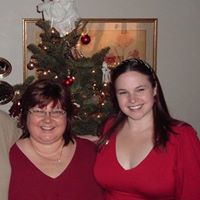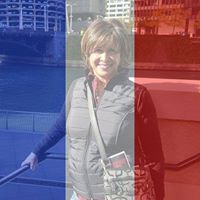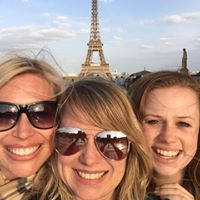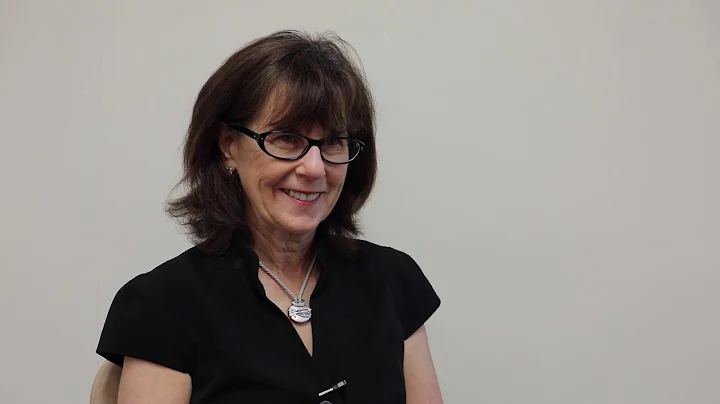Debra R Reinhart
age ~71
from Orlando, FL
- Also known as:
-
- Debra Rae Reinhart
- Debbie R Reinhart
- Debra R Beinhart
- Phone and address:
-
100 S Eola Dr UNIT 706, Orlando, FL 32801
4077668428
Debra Reinhart Phones & Addresses
- 100 S Eola Dr UNIT 706, Orlando, FL 32801 • 4077668428
- 1638 Via Tuscany, Winter Park, FL 32789 • 4076440491
- 170 Shell Pt, Maitland, FL 32751 • 4076440491
- Oviedo, FL
- Southbridge, MA
- Atlanta, GA
- Decatur, GA
- Orange Pk, FL
- Dawsonville, GA
Work
-
Company:University of central florida, inc.
-
Address:4000 Central Florida Blvd, Orlando, FL 32816
-
Phones:4078232000
-
Position:Ex associate dean deans office
-
Industries:Colleges, Universities, and Professional Schools
Education
-
Degree:Associate degree or higher
Resumes

Associate Vice President For Research And Scholarship
view sourceIndustry:
Higher Education
Work:
University of Central Florida
Associate Vice President For Research and Scholarship
Associate Vice President For Research and Scholarship

Assistant Vice President For Research
view sourceLocation:
100 south Eola Dr, Orlando, FL 32801
Industry:
Environmental Services
Work:
National Science Foundation Sep 2011 - Sep 2013
Program Director
University of Central Florida Aug 1996 - Aug 2008
Associate Dean For Research
University of Central Florida Aug 1996 - Aug 2008
Assistant Vice President For Research
University of Central Florida Aug 1994 - Aug 2000
Associate Professor
University of Central Florida Aug 1994 - Aug 2000
Professor
Program Director
University of Central Florida Aug 1996 - Aug 2008
Associate Dean For Research
University of Central Florida Aug 1996 - Aug 2008
Assistant Vice President For Research
University of Central Florida Aug 1994 - Aug 2000
Associate Professor
University of Central Florida Aug 1994 - Aug 2000
Professor
Education:
Georgia Institute of Technology 1986 - 1989
Doctorates, Doctor of Philosophy, Environmental Engineering University of Central Florida 1974 - 1976
Bachelors, Bachelor of Science, Environmental Engineering Seminole High School
Doctorates, Doctor of Philosophy, Environmental Engineering University of Central Florida 1974 - 1976
Bachelors, Bachelor of Science, Environmental Engineering Seminole High School

Debra Reinhart
view sourceName / Title
Company / Classification
Phones & Addresses
Ex Associate Dean Deans Office
University of Central Florida, Inc.
Colleges, Universities, and Professional Scho...
Colleges, Universities, and Professional Scho...
4000 Central Florida Blvd, Orlando, FL 32816
Principal
Reinhart Engineering
Engineering Services
Engineering Services
1638 Via Tuscany, Winter Park, FL 32789
R PLACE MULTI-PURPOSE FACILITY, INC
REINHART PROPERTIES, INC
Secretary, Treasurer
UNIVERSITY OF CENTRAL FLORIDA RESEARCH FOUNDATION, INC
Business Services at Non-Commercial Site · Sports Club/Manager/Promoter
Business Services at Non-Commercial Site · Sports Club/Manager/Promoter
12201 Research Pkwy SUITE 501, Orlando, FL 32826
12201 Res Pkwy N, Orlando, FL 32826
12201 Res Pkwy N, Orlando, FL 32826
Us Patents
-
Zero-Valent Metal Emulsion For Reductive Dehalogenation Of Dnapls
view source -
US Patent:6664298, Dec 16, 2003
-
Filed:Oct 2, 2001
-
Appl. No.:09/972296
-
Inventors:Debra R. Reinhart - Maitland FL
Christian Clausen - Chuluota FL
Cherie L. Geiger - Geneva FL
Jacqueline Quinn - Titusville FL
Kathleen Brooks - Orlando FL -
Assignee:The United States of America as represented by the Administrator of the National Aeronautics Space Administration - Washington DC
-
International Classification:B01F 1700
-
US Classification:516 22, 588248, 252181, 252178
-
Abstract:A zero-valent metal emulsion is used to dehalogenate solvents, such as pooled dense non-aqueous phase liquids (DNAPLs), including trichloroethylene (TCE). The zero-valent metal emulsion contains zero-valent metal particles, a surfactant, oil and water. The preferred zero-valent metal particles are nanoscale and microscale zero-valent iron particles.
-
Contaminant Removal From Natural Resources
view source -
US Patent:7008964, Mar 7, 2006
-
Filed:May 28, 2003
-
Appl. No.:10/449907
-
Inventors:Christian A. Clausen - Chuluota FL, US
Jacqueline W. Quinn - Titusville FL, US
Cheri L. Geiger - Geneva FL, US
Debra Reinhart - Maitland FL, US
Laura B. Filipek - Deltona FL, US
Christina Coon - Oviedo FL, US
Robert Devor - Clermont FL, US -
Assignee:The United States of America as represented by the Administrator of the National Aeronautics and Space Administration - Washington DC
-
International Classification:B01F 17/00
B01F 3/08
B09C 1/08
C02F 1/72 -
US Classification:516 20, 1663051, 166310, 2101981, 252181, 4051285, 40512925
-
Abstract:A zero-valent metal emulsion containing zero-valent metal particles is used to remediate contaminated natural resources, such as groundwater and soil. In a preferred embodiment, the zero-valent metal emulsion removes heavy metals, such as lead (Pb), from contaminated natural resources. In another preferred embodiment, the zero-valent metal emulsion is a bimetallic emulsion containing zero-valent metal particles doped with a catalytic metal to remediate halogenated aromatic compounds, such as polychlorinated biphenyls (PCBs), from natural resources.
-
Zero-Valent Metal Emulsion For Reductive Dehalogenation Of Dnapls
view source -
US Patent:7037946, May 2, 2006
-
Filed:Oct 31, 2003
-
Appl. No.:10/701412
-
Inventors:Debra R. Reinhart - Maitland FL, US
Christian Clausen - Chuluota FL, US
Cherie L. Geiger - Geneva FL, US
Jacqueline Quinn - Titusville FL, US
Kathleen Brooks - Orlando FL, US -
Assignee:The United States of America as represented by the Administrator of the National Aeronautics and Space Administration - Washington DC
-
International Classification:B01F 17/00
B01F 3/08 -
US Classification:516 22, 516 20, 588248, 252181, 252178
-
Abstract:A zero-valent metal emulsion is used to dehalogenate solvents, such as pooled dense non-aqueous phase liquids (DNAPLs), including trichloroethylene (TCE). The zero-valent metal emulsion contains zero-valent metal particles, a surfactant, oil and water. The preferred zero-valent metal particles are nanoscale and microscale zero-valent iron particles.
-
Reactive Material Placement Technique For Groundwater Treatment
view source -
US Patent:62071149, Mar 27, 2001
-
Filed:Jul 13, 1998
-
Appl. No.:9/127860
-
Inventors:Jacqueline W. Quinn - Titusville FL
Christan A. Clausen - Orlando FL
Debra R. Reinhart - Maitland FL
Manoj B. Chopra - Oviedo FL -
Assignee:The United States of America as represented by the Administrator of the
National Aeronautics and Space Administration - Washington DC -
International Classification:C02F1/70
-
US Classification:422128
-
Abstract:The invention provides a permeable treatment wall comprising one or more high-permeability columns, as well as a methods for preparing such a permeable treatment wall.
-
Apparatus For Measuring Gas Emission Rate From Soil
view source -
US Patent:53557395, Oct 18, 1994
-
Filed:Mar 26, 1993
-
Appl. No.:8/037332
-
Inventors:Charles D. Cooper - Maitland FL
Debra R. Reinhart - Oviedo FL
Debra R. H. Seligman - Altamonte Springs FL -
Assignee:University of Central Florida - Orlando FL
-
International Classification:G01N 714
G01N 122 -
US Classification:7386473
-
Abstract:Gas flux rate from a surface is measured using an elongated tubular housing having a lower open end and an upper open end with a support positioned within the housing a predetermined distance from the lower open end. A gas sampling wand extends into the housing from the upper open end and is supported on the support. The wand has a lower open end at the support generally co-planar with the lower open end of the housing. An air baffle is coupled to the upper open end of the housing for reducing velocity and pressure fluctuations of atmospheric air entering the housing from the upper end. A detector is coupled to the wand for measuring the concentration of selected gases within the housing. A funnel-shaped hood circumscribes the lower open end of the wand and increases the sample collection area of the wand. An air pump is coupled to the wand for drawing air and gases into the wand from the area adjacent the lower open end of the housing.
-
Use Of Ultrasound To Improve The Effectiveness Of A Permeable Treatment Wall
view source -
US Patent:60132329, Jan 11, 2000
-
Filed:Jul 31, 1997
-
Appl. No.:8/904028
-
Inventors:Jacqueline W. Quinn - Titusville FL
Christian A. Clausen - Orlando FL
Cherie L. Geiger - Geneva FL
Debra R. Reinhart - Maitland FL
Nancy Ruiz - Mims FL -
Assignee:The United States of America as represented by the Administrator of the
National Aeronautics and Space Administration - Washington DC -
International Classification:C02F 170
A61L 202 -
US Classification:422128
-
Abstract:A method for increasing the effectiveness of a permeable treatment wall is described. The method includes the introduction of ultrasonic radiation in or near the wall. A permeable treatment wall is also described which has an ultrasonic radiation generating transducer in or near the wall. Permeable treatment walls are described as having either a well vertically extending into the wall, or a rod vertically extending into the treatment wall. Additionally, a method for adapting a permeable treatment wall to allow for the introduction of ultrasonic radiation in or near the wall is described.
License Records
Debra Rae Reinhart
Address:
1638 Via Tuscany, Winter Park, FL 32789
License #:
51733 - Active
Category:
Engineers
Issued Date:
Jun 26, 1997
Effective Date:
Jun 26, 1997
Expiration Date:
Feb 28, 2019
Type:
Professional Engineer
Isbn (Books And Publications)


Quality Assurance - A National Commitment: Proceedings of the Conference, Minneapolis, Minnesota, October 5-8, 1997
view sourceAuthor
Debra Reinhart
ISBN #
0784402922

Debra Reinhart
view source
Debra Reinhart
view source
Debra L. Reinhart
view source
Debra Reinhart
view sourceYoutube
Classmates

Debra Parsons (Reinhart)
view sourceSchools:
Loogootee High School Loogootee IN 1969-1973

Debra Reinhart
view sourceSchools:
Lansing Central High School Lansing NY 1967-1971

debra reinhart | Isaac Ju...
view source
Debra Reinhart, Edgerton ...
view source
Loogootee High School, Lo...
view sourceGraduates:
Debra Reinhart (1969-1973),
Kim Stevens (1980-1984),
Warren Sims (1986-1990),
Donna Wildman (1975-1979),
Lisa Witt (1987-1991),
Susan Norris (1977-1981)
Kim Stevens (1980-1984),
Warren Sims (1986-1990),
Donna Wildman (1975-1979),
Lisa Witt (1987-1991),
Susan Norris (1977-1981)
Get Report for Debra R Reinhart from Orlando, FL, age ~71





